Butterfly milkweed (
Asclepias tuberosa)
is a magnet for bees and butterflies in early spring — often providing an important source of nectar when other sources are scarce. What other perennial can rival its bright orange flowers, low mounding habit and high tolerance for drought? Although by August it has finished flowering in most of its range, it is an important plant to consider for a fall planting for next year’s butterfly garden or if you specifically want to plant something to help monarch butterflies or pollinators in general.
Combine this prairie perennial with any other medium-height perennial that offers a contrast in flower color and form. Use this plant massed in perennial gardens, butterfly gardens, informal prairie plantings or xeric landscapes.
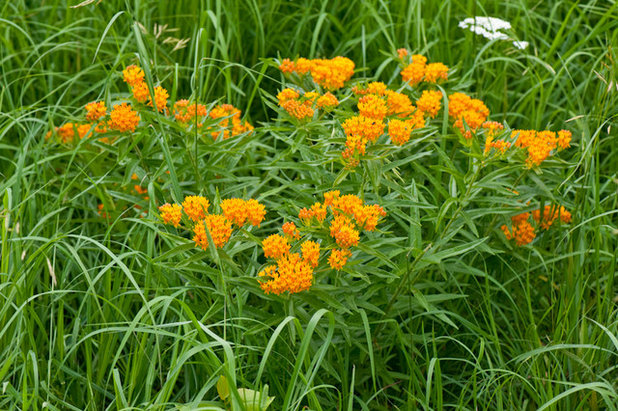
Holm Design & Consulting LLC
Botanical name: Asclepias tuberosaCommon name: Butterfly milkweed
Origin: Native to most of North America except for the Canadian Atlantic provinces and northwestern states and provinces
Where it will grow: Hardy to -40 degrees Fahrenheit (USDA zones 3a to 10b; find your zone)
Typical plant communities: Oak savannas, prairies and woodland edges
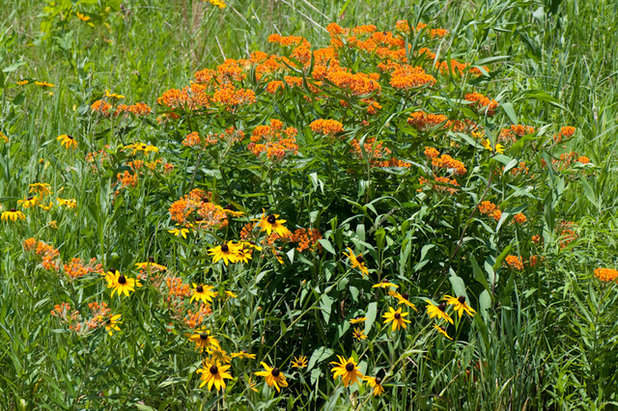
Holm Design & Consulting LLC
Water requirement: Medium to dry, well-drained soil; sand to loam
Light requirement: Full sun
Mature size: 1 foot to 2 feet tall and 2 to 2½ feet wide
Benefits and tolerances: Requires well-drained soil free of compaction or clay
Seasonal interest: Vibrant bright orange flowers in late spring; seedpods are held erect when developing
When to plant: Spring or fall
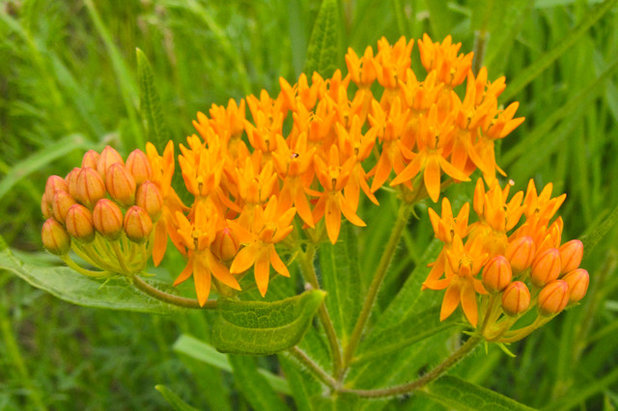
Holm Design & Consulting LLC
Distinguishing traits. The most obvious distinguishing trait is the bright orange flowers. There are few other plants that can match the vividness of these flowers. Combine butterfly milkweed with any blue- or violet-flowering native plants for an outstanding color contrast.
How to use it. Butterfly milkweed has a nice low-growing mounding habit, making it suitable for perennial borders; mass it in swaths in both formal and informal plantings. This perennial also looks at home in a rock garden surrounded by various-size rocks or boulders.
Butterfly milkweed is slow to emerge in the spring. For that reason interplant it with early-flowering plants that prefer similar dry conditions, such as American pasque flower (
Anemone patens) or prairie smoke (
Geum triflorum).
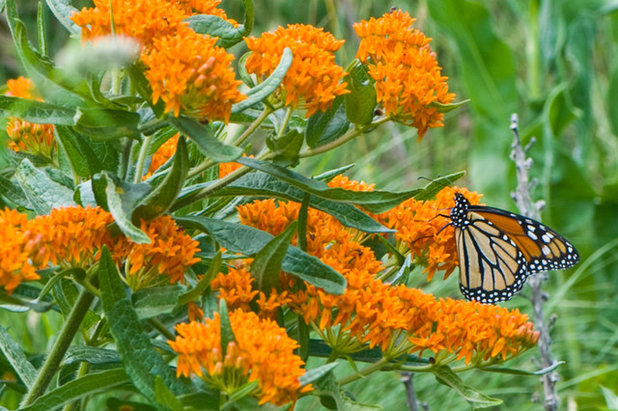
Holm Design & Consulting LLC
Planting notes. Small and mature plants cannot be moved or divided because of the plant’s large taproot.
Collect seeds from the pods just as the pods begin to open. Store them in a cool, dry place, then cold stratify them for 60 days in the fridge in damp sand prior to sowing them in flats or outdoors the following spring.
This is a commonly cultivated plant and is available at most native-plant nurseries in its natural range. Unlike most other milkweeds (
Asclepias spp) the leaves of
A. tuberosa do not produce a milky sap.
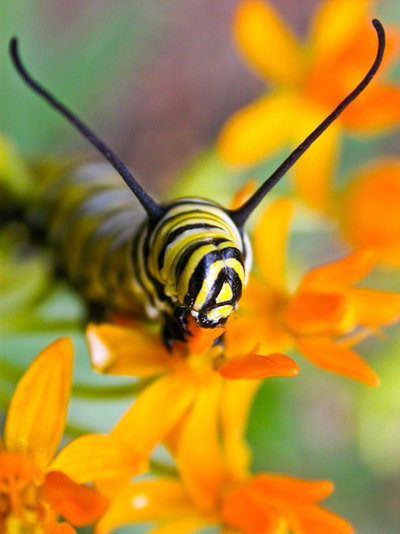
Holm Design & Consulting LLC
Pollinator notes. Butterfly milkweed is a larval host plant for the monarch butterfly, but if you also grow common milkweed or swamp milkweed, you’ll find that caterpillars often show a preference for these milkweeds over butterfly milkweed.
The flowers offer nectar to visiting pollinators. Butterfly milkweed is frequently visited by butterflies and moths as well as bees, ants and wasps.
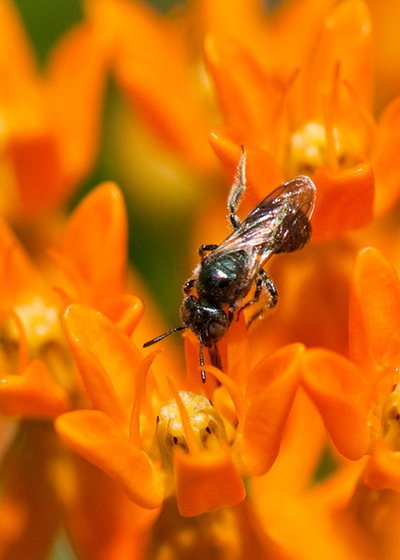
Holm Design & Consulting LLC
Visiting the flowers for nectar can be precarious for pollinators. Unlike with all other plants (except orchids), the pollen is packaged into sticky sacs called pollinia. Two sacs are held together by a filament, and when large pollinators (such as bumblebees) visit, their legs hook on to these filaments, pulling out the sticky pollinia sacs. These sacs remain attached to the legs of pollinators as they travel to the next milkweed plant. If the leg slips while visiting another milkweed flower, the sacs can be deposited into the stigmatic chamber of a flower, delivering the pollen needed to fertilize the ovules and produce seeds. However, smaller insects (and butterflies) can get stuck, unable to free their leg from the flowers.
Shown: A small carpenter bee (
Ceratina sp.)





